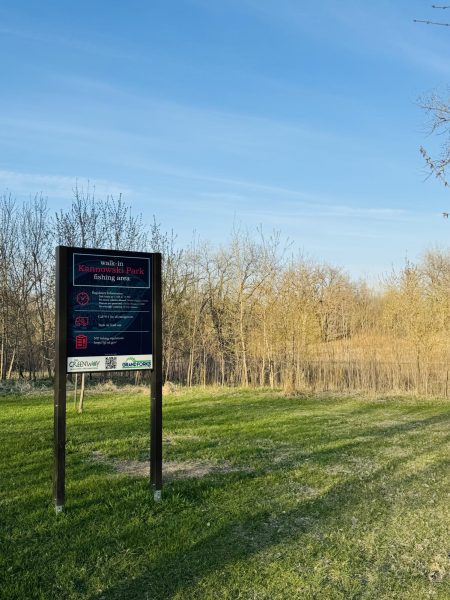DS View: Rights
I figured you’d be able to see far from the Tower of Hope, but who knew it was in Manitoba?
Last weekend, we went to the brand new Canadian Museum for Human Rights in Winnipeg, and it was seriously cool.
The journey through the museum starts at the bottom of an architectural labyrinth of winding ramps, twisting staircases and dizzying works of art.
Exhibits on each floor use different combinations of visual art, music, text and interactive screens to present their arguments about the history of genocide and human rights in Canada and throughout the world.
Having grown up near the border, you’d think I’d know more about the history of our northern neighbors, but I realized a few minutes in that there was much I had never considered.
In many ways, Canada went through the same horrific things America did in the last couple hundred years, and in many more, they are miles ahead of our society’s version of inclusion and equality.
Like the United States, for instance, the Canadian government and its early settlers went through the same patterns of abuse against the native peoples of the area. Reading the text of the “Indigenous Perspectives” exhibits — printed in both English and French, as were the other exhibits — felt like a trip through the same old stories of broken promises and disregarded human decency we’ve heard about U.S. treatment of Native Americans
Another exhibit explained how the Canadians, like the Americans, interred Japanese citizens in prison camps during World War II. Behind glass, I saw the suitcase and cooking utensils of a young Japanese man born and raised in Canada, who was suddenly deemed an “enemy alien” by his country and forced to register himself as such and leave the continent.
I still haven’t decided if I was more disturbed by the patterns of history like these that have repeated themselves in different times and places, or the problems I hadn’t heard of before.
The most sobering of these I learned about is the massive ongoing crisis of violence, murder and abduction of indigenous women in sex trafficking systems. (If you’re interested to learn about how insane that problem is, check out Vice News for a really great news film on the subject).
Elsewhere in the museum, I learned about the good things Canada is up to in regards to human rights that the rest of the world could benefit from paying attention to.
On top of that list is the fact that Canada became the fourth country in the world to legalize same-sex marriage 10 years ago. An awesome display featuring images of same-sex Canadian couples at their weddings was one of the few exhibits at the museum that didn’t leave me feeling ashamed to be a human being.
At the top of the massive building stands the Tower of Hope — an obelisk jutting an additional 24 meters above the city that provides a spectacular view of Winnipeg.
From here, we saw the horizon for what it is — a circle, where what looks like two things are really one. I’m not sure how hopeful I felt for humanity after trekking through the bowels of the Museum for Human Rights, but there certainly isn’t a better way to end the experience there than with the stark reminder of our unity visible from that height.
Will Beaton is the Editor-in-Chief of the Dakota Student. He can be reached at [email protected].
Larry Philbin is the news editor of The Dakota Student. He can be reached at [email protected].







